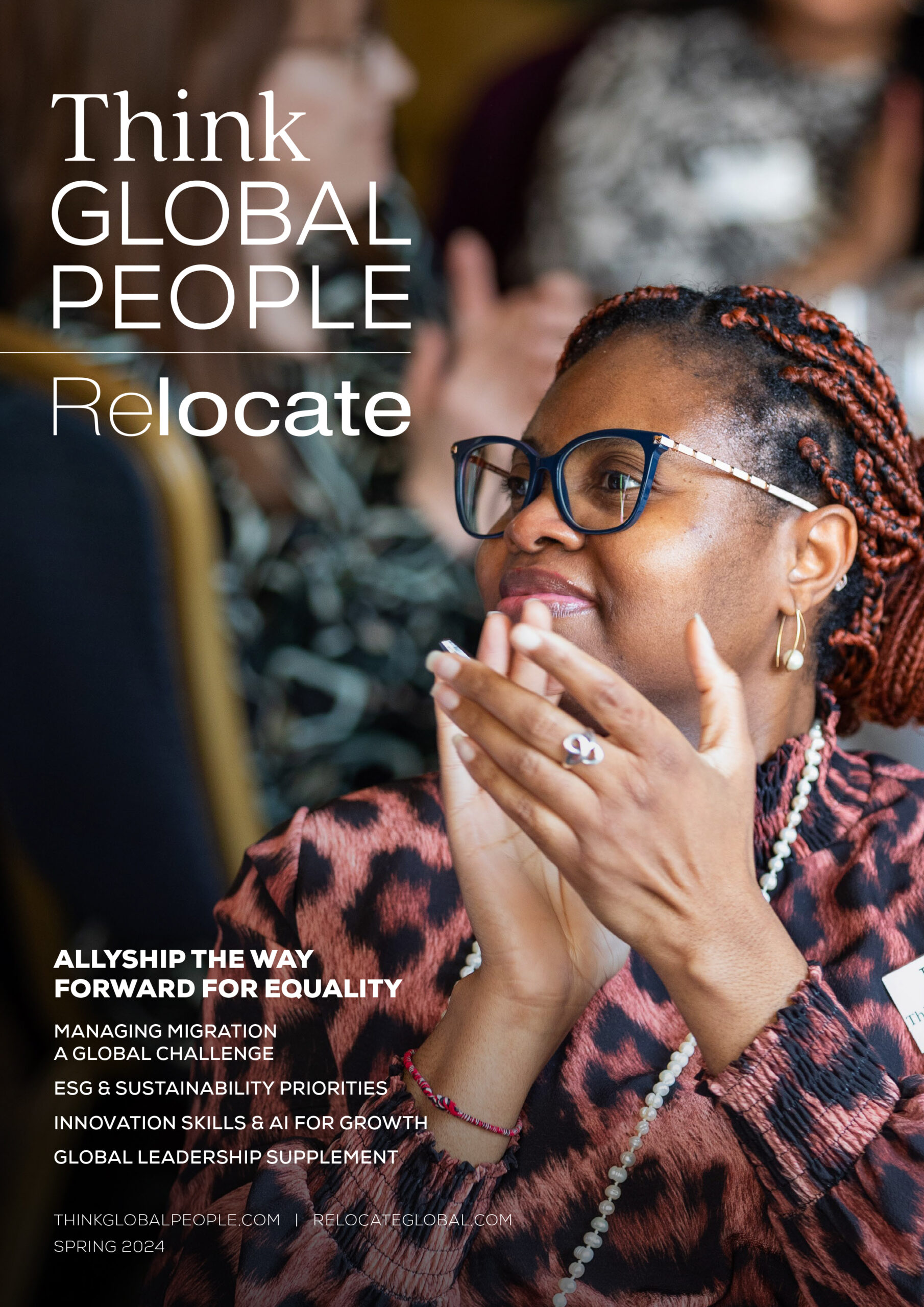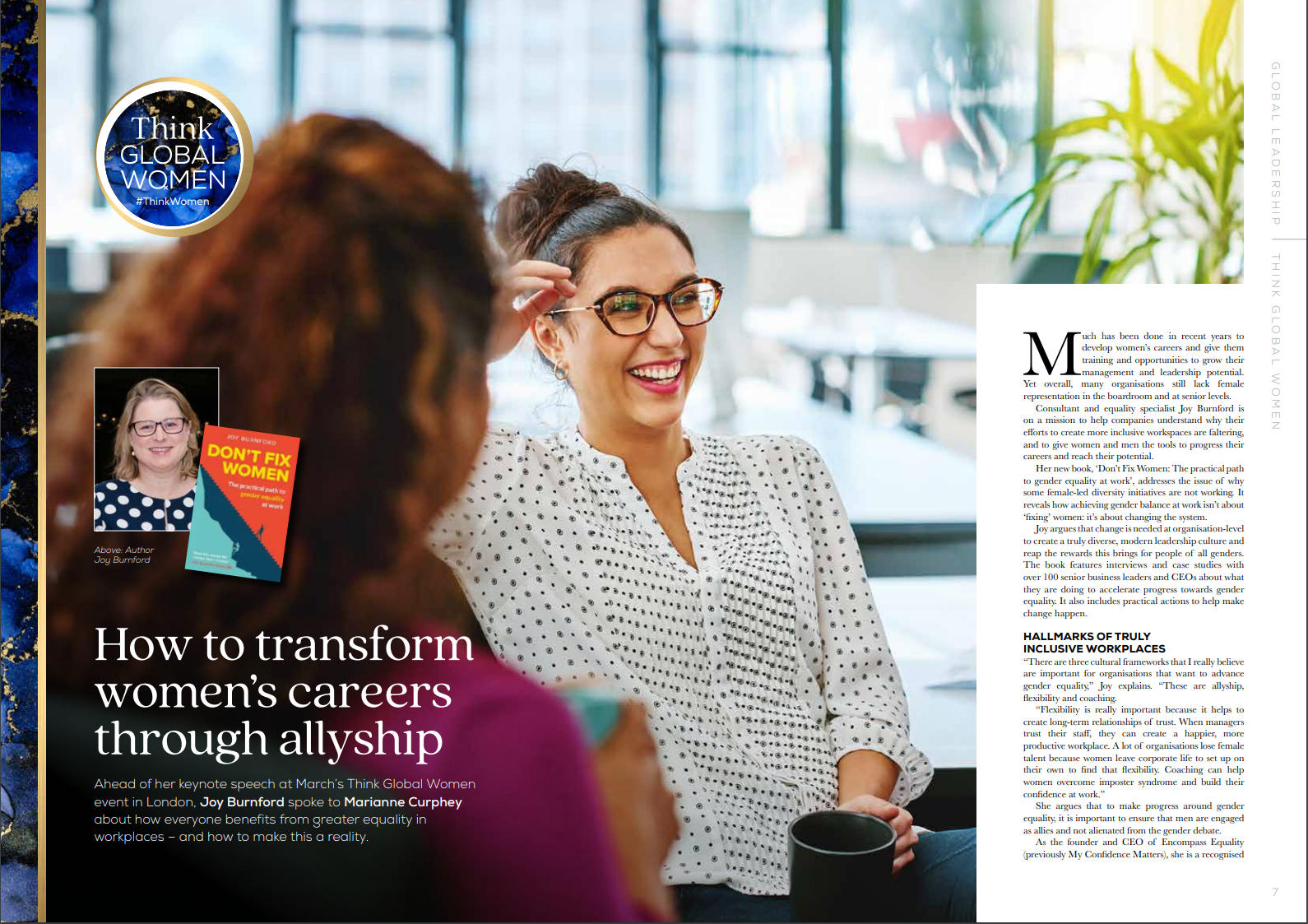Women in Leadership: why we still need to redress the gender pay gap in 2023
Why are women still seen as less suitable candidates for senior management roles than men? We look at how companies with global employees are missing out on talent by failing to promote women, and how their business may be less successful as a result. Marianne Curphey investigates.
The perception of women as leaders has not changed in three years, despite the triumphs of female leaders, their strong stewardship of a number of countries during Covid, and the strategies companies around the globe having been making to ensure senior roles are more accessible and attractive to women.
The Reykjavik Index for Leadership, launched at the Reykjavík Global Forum –Women Leaders, held recently in Iceland, found that there has been no progress in the journey to gender equality for the G7 since 2019. The report highlighted entrenched gender stereotypes regarding men and women in positions of leadership. The report found that the pandemic had a “dramatic impact” on gender equality, and while many women took prominent leadership roles in fighting the pandemic, in medical research, healthcare and government, “deeply rooted views on female leadership are hard to shift”.
The Reykjavík Global Forum – Women Leaders was the fifth time the conference has been held in Iceland. The Index measures the perceived legitimacy of women’s suitability to lead. Unfortunately, the research found that perceptions of female leadership have not changed and demonstrates a wide range of prejudice across a number of sectors and countries.
Gina Lodge, CEO, World View who attended the Forum commented, “The World needs a new style of leadership. Accelerating gender equality at C suite level would optimise the effectiveness of feminine and masculine traits working together in the creation of a better environment and role model for future generations.”
How can female leadership be supported?
“Despite seeing inspiring leadership from women leaders throughout the Covid-19 pandemic, confidence in women leaders has actually fallen,” says Katya Kim, a Leadership Development Consultant and the Founder of WhizzMind.
She spent 14 years in HR and Talent with many multinational pharmaceutical companies, as well as within the retail, tech and fashion industries and now
specialises in working with ex-pats.
“Ensuring the flexibility of working positions would also support more women at work,” she says. “The private sector can bring best practices to attract more females into leadership roles. Companies can develop a strategy for strengthening female leadership presence and consider using gender-neutral language in the hiring process.”
She suggests that developing mentorship programmes, educating managers and collecting and analysing data can all be tools to support the promotion of women. Other measures include assessing candidates’ and employees’ experience, collecting data about the number of promotions among females, and educating management teams about taking decisions on promotions.
She says legislation on the Gender Pay Gap has raised awareness around womens pay and convinced organisations to take action.
“The key thing is not only to submit the data, but also to analyse it, make conclusions, and build a plan for improvement,” she says. “Larger organisations have more policies and strategies in place to reduce the gender pay gap, but SMEs represent about 90% of businesses and more than 50% of employment worldwide. Flexible opportunities for work are also more important for women.”

Why Are Stereotypes of women and women in leadership, still so negative?
According to the Chartered Institute of Personnel and Development (CIPD), the reasons for the gender pay gap are complex and interrelated, and include economic, cultural, societal and educational factors including:
• A lack of flexible working options
• Women being the main providers of unpaid caring responsibilities
• Occupational segregation
• The undervaluing of women’s work
• Pay discrimination
“This is very much interrelated to the stereotypes and bias against women,” says Katya Kim. “Even if females are promoted to senior roles, do they get enough support in their new roles?
Can they see enough men allies among their colleagues?
Are they included in team discussions, outside of the office (‘men’s clubs’)?
I am sure there are still many organisations who will respond; ‘No’, unfortunately.
The World needs a new style
of leadership. Accelerating gender equality at C suite level would optimise the effectiveness of feminine and masculine traits working together in the creation of a better environment and role model for future generations.”
Gina Lodge, CEO, World View
How can organisations redress the balance?
Florence Brocklesby is founder of Bellevue Law, a firm for women in professional services seeking advice on discrimination issues. She is a former City lawyer, who founded Bellevue Law in 2014 to allow her to combine a challenging legal career with raising a young family
She believes that a lack of diversity in organisations creates a “vicious circle” where senior managers, who are often male and white, promote men in their own image. Not only does this send a negative message to the women in the organisation, it also means that businesses are missing out on a huge well of female talent that is going unrecognised and unpromoted. She also takes issue with the concept that women in leadership are seen as role models in a way that men are not.
“If you take 100 leaders, some of them will be extraordinary, many of them will be very good, some will be average, and others will be poor. But because there are so few female leaders, they are in a very difficult position. They may be given a role model status that they do not want. She says that some of the issues around the lack of promotion of women could be to do with senior managers carrying unconsciously biased views about the suitability of women or other protected categories of people to become leaders.
Some companies have tried to address this by training staff to be aware of bias or prejudices that they may have, but critics have suggested that this does little to really change thoughts or behaviours. Unconscious bias training has become widely critiqued, she says, because it has become a box-ticking exercise that has not made a significant difference to the culture of organisations and staff who undertake it. Instead, businesses need to actively take steps to increase the number of the women in management roles.
“It is possible to make people aware of their own bias and businesses should actively prioritise that,” she says. “By taking active steps, organisations can increase the number of female leaders and it becomes a virtuous circle.”
“The more senior women that you have, the more normal it is to have them,” she says.
Women leaders bring fresh perspectives and qualities
Another area where organisations, especially those with global teams or where employees are sent to different jurisdictions on assignment, can make a difference is accommodating the needs of working women.
“The needs of female leaders may be different from the needs of men,” she says. “It might be good to think about leadership in your business. If you only have 10% of leaders who are women then you are probably missing out on some really good leaders.”
She cites the example of large law firms where there is not necessarily a misogynist culture, and yet senior female managers and equity partners are rare.
“In a City law firm, more than 50% of graduate entries will be female and most people coming out of law school are women, yet those firms have very few senior women. Less than 20% of equity partners are female and the gender pay gap is enormous, even greater than in investment banking,” she says.
It is a waste of talent and time for women who have been denied careers and a missed opportunity for companies who could be nurturing a wider range of talent for the future while they are in the middle of a global talent shortage.
She says organisations should think about why talented people are leaving.
“Maybe without realising it, an organisation is making it hard for women to progress. This applies across all kinds of other protected characteristics – for example why are there so few black partners? Why don’t we have disabled people advising firms or industries? The talent is there, but it depends on what your perception is and what you think a leader looks like.”
While it is important not to generalise or to stereotype the qualities that female leaders bring, some characteristics that women in leadership demonstrate are the ability to collaborate and being able to build a more inclusive culture.
Equal gender pay and flexibility play an important part in attracting women to senior roles
Sandra Wilson, director, recruitment and HR consultant Cottrell Moore, says that the issues that she sees regularly are when higher earners experience a much larger difference in hourly pay between the sexes compared with lower paid employees.
“Women are usually the ones who require a more flexible working environment and yet in my view often deliver just as much value, if not more, than their male counterparts, sometimes in half the time,” she says.
“However, in comparison women are reluctant to discuss salary and ask for raises as often. It’s evidenced when women apply for jobs. They only apply if they know they tick all the boxes, while men are more likely to take a risk and apply if they only tick half.
On a positive note, it looks like females in the younger generation are more confident to address pay, as the stats show over time the gender pay gap is slowly decreasing in the under 40s.”
We also need to talk about childcare costs, parental leave and return to work policies as part of a culture of equality and inclusivity.”
Carla Hoppe, founder, workplace financial wellbeing provider Wealthbrite
Save the date
The Innovation Festival for Global Working
Join us on 8 June 2023 in Kent, UK
Carla Hoppe, founder, workplace financial wellbeing provider Wealthbrite, says the latest gender pay gap statistics are “shocking”.
“Progress appears to be reversing before our eyes. We need to ask what is causing this? McKinsey reported earlier this month that women are leaving jobs in record numbers searching for greater flexibility, inclusivity and meaningful support for their wellbeing,” she says.
“We also need to talk about childcare costs, parental leave and return to work policies as part of a culture of equality and inclusivity.”
Edua Efom, consultant, HR Consultancy Face2Face HR says these issues need to be higher up on the agenda. “Obtaining gender pay gap data is the first step to making change,” she says. “If you do not know where the problem is, you cannot expect to solve it. The next step is to take action. Are companies recruiting using the same networks? Why not try to recruit from women networking groups such as women in tech or women in construction? Are companies using employee forums to ensure that women have a voice in their businesses? Do companies have policies in place that support women, such as menopause at work? Implementing these steps cost nothing. It is a question of leadership and putting this issue higher up on companies’ agendas.”
Claire Trachet, Founder and CEO of Trachet, a business advisory firm specialising in helping companies operating the technology, chemicals, infrastructure, healthcare and Natural Resources industries knows that getting a foot in the door of investment banking is hard for women and ethnic minority individuals but is not the only challenge in the sector.
After a successful career in investment banking, Claire decided to set up her advisory, Trachet, which also aims to address the inequalities that women and those from ethnic minorities face in the workplace. She was not only shocked by the inaccessibility of the industry, especially for roles with higher seniority but also in the critical issue of unjust pay gaps that existed within these well-established organisations that claim to have very advanced diversity programs.
In Investment banking, women make on average, 56% of what their male counterparts earn, at Barclays bank the bonus pay gap stands at a staggering 70% in 2022, up from 66.2% in 2020 which indicates inequality is getting worse.
Diversity and inclusion can boost business returns
A report commissioned by McKinsey & Co called Diversity Wins found that teams with more than 30% female executives were 48% more likely to outperform those with few to no female execs. This is replicated in the case of ethnic and cultural diversity where the companies with the highest ethnic diversity outperformed companies with the least diversity by 36%.
“Social models are still significantly biased against women and minorities,” she says. “This is reflected in business by lower salaries, a slower career path, distinct lack of access to C-suite or board positions and both fewer and smaller investments received.
There is no chance of reaching a more balanced set of opportunities for women and men without society making conscious choices to start with. Crucially, it is important to note that this is not advocating for the promotion of subpar businesses because they are led by women. It is about giving people a fair shot and owning the fact that biases run deep within businesses and institutions all around the world, including tech!
Accountability and actions are a path to the balancing of opportunities, she says, and women-led businesses regularly outperform other businesses, meaning excess returns for the investors.
“They tend to reach these top echelons of performance in a more capital-efficient way,” she says.
On top of this, businesses led by women tend to be less volatile during crises. Female entrepreneurs also tend to build businesses that are more diverse, hence the added creativity in problem-solving, and have increased capacity to attract and retain talent in this era of the “great resignation”.
There is still a long way to go before the recruitment and promotion process and the composition of the boardroom, truly reflects the diversity of talent within organisations. Globally mobile employees, who have access and exposure to many cultures and experiences, are among the best placed to start to understand the benefits that diversity and inclusion provide.
Employers with global teams now need to look again at their recruitment and talent pipelines to identify areas where female and minority staff can be supported and encouraged, and their voices heard. Then we can start to make progress towards a world where female leadership is the norm, rather than an anomaly.




